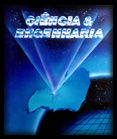THEORETICAL STUDY OF SPECTROSCOPIC PROPERTIES OF THE NUCLEAR MAGNETIC RESONANCE 1H-RMN, 13C-RMN AND 17O-RMN RELATIVE TO THE BIODIESEL QUALITY
DOI:
https://doi.org/10.14393/19834071.2016.22805Abstract
Biodiesel fuel has been characterizing as an alternative for substitution of the diesel from petroleum, mainly due to its renewable character, lower impact on the environment than fossil fuels and the diversity of raw materials, since it can be obtained from vegetable oils, animal fat or waste oil or frying. Despite the advantages of these fuel, studies should be conducted to ensure their quality for their application in automotive, mainly due to the high susceptibility to the oxidation relative to the fossil fuels. In this work, we have studied of the theoretical spectroscopic properties of the Nuclear Magnetic Resonance 1H-RMN, 13C-RMN and 17O-RMN of the soybean biodiesel molecules and ones resulting of the oxidative degradation. The obtained results can be aid the interpretation of the experimental spectra and provide new methodologies for detection of the oxidation level that can be useful tools for the quality control of the biodiesel. Keywords: Biodiesel, Quality, Spectroscopic Properties.Downloads
Download data is not yet available.
Downloads
Published
2016-08-26
Issue
Section
Chemistry


